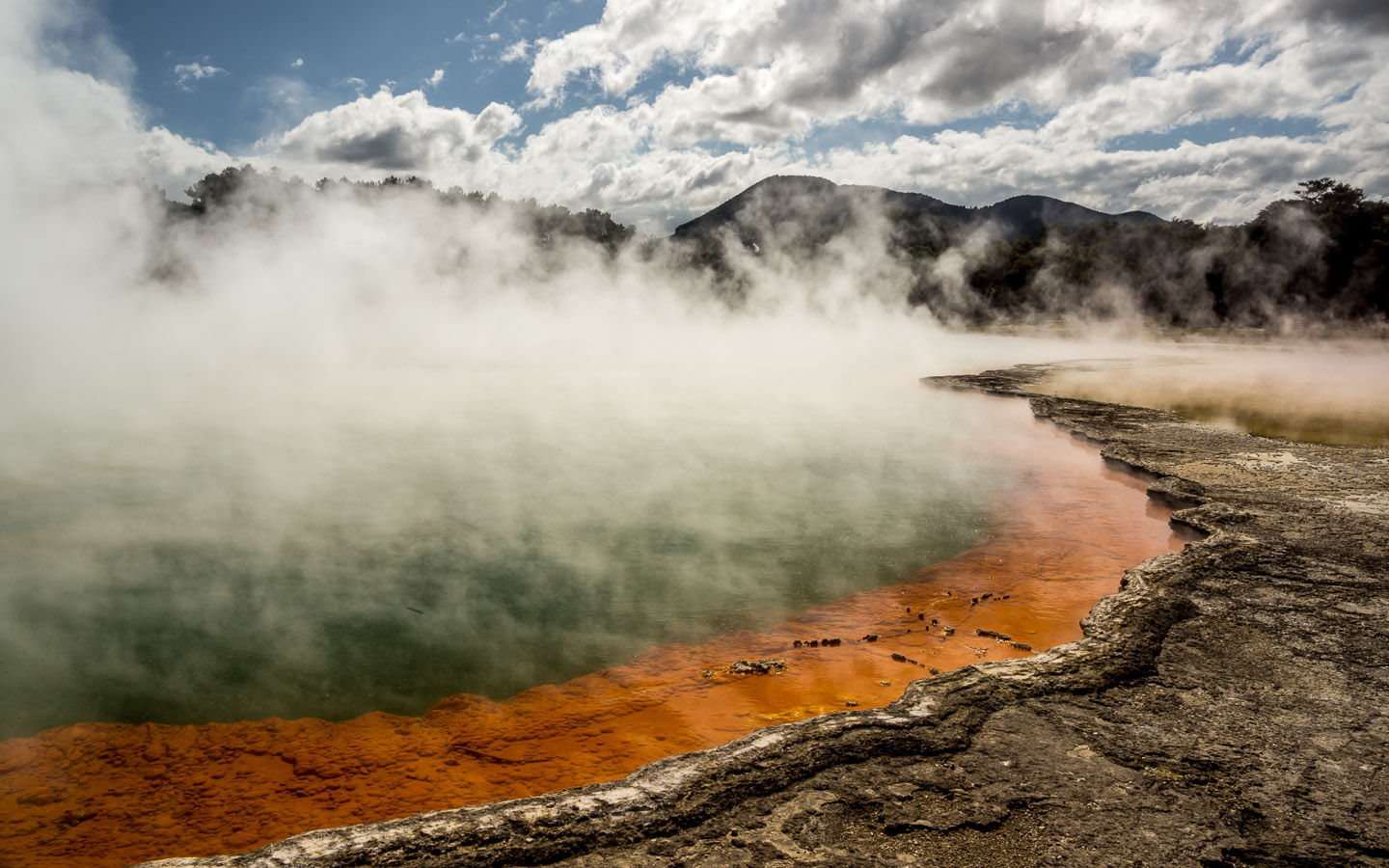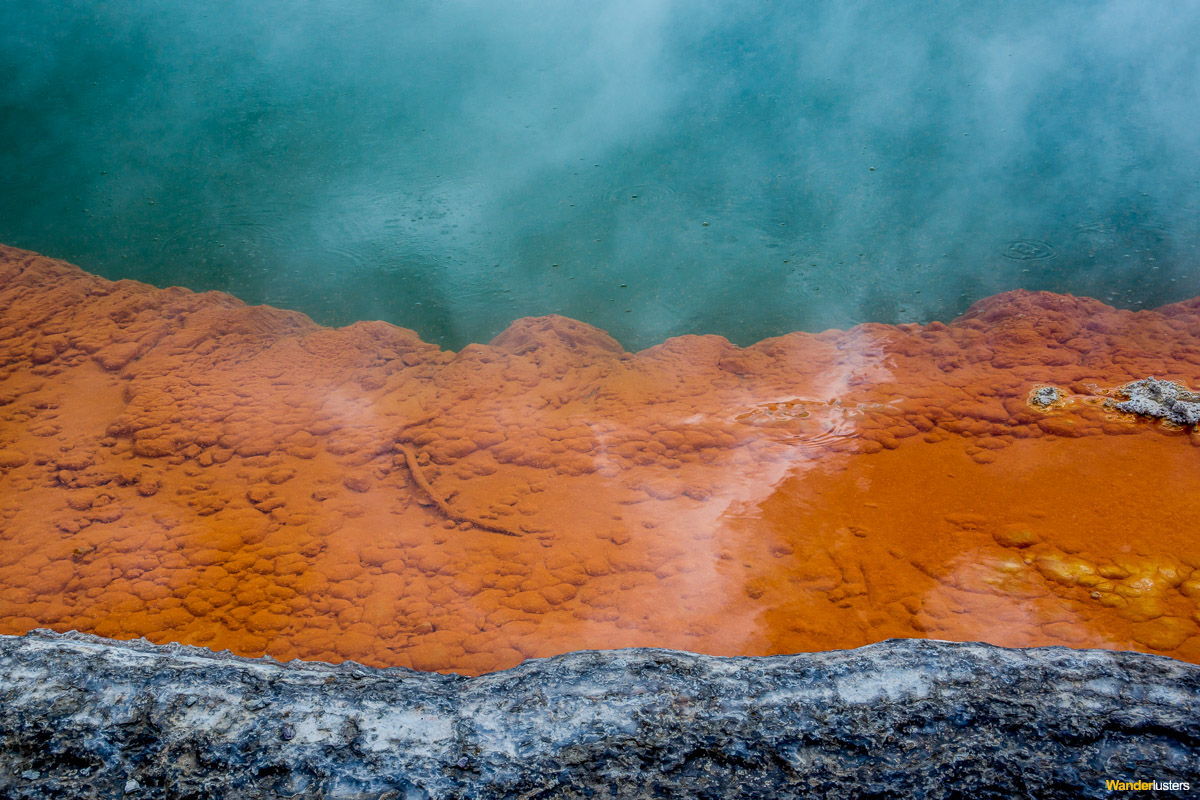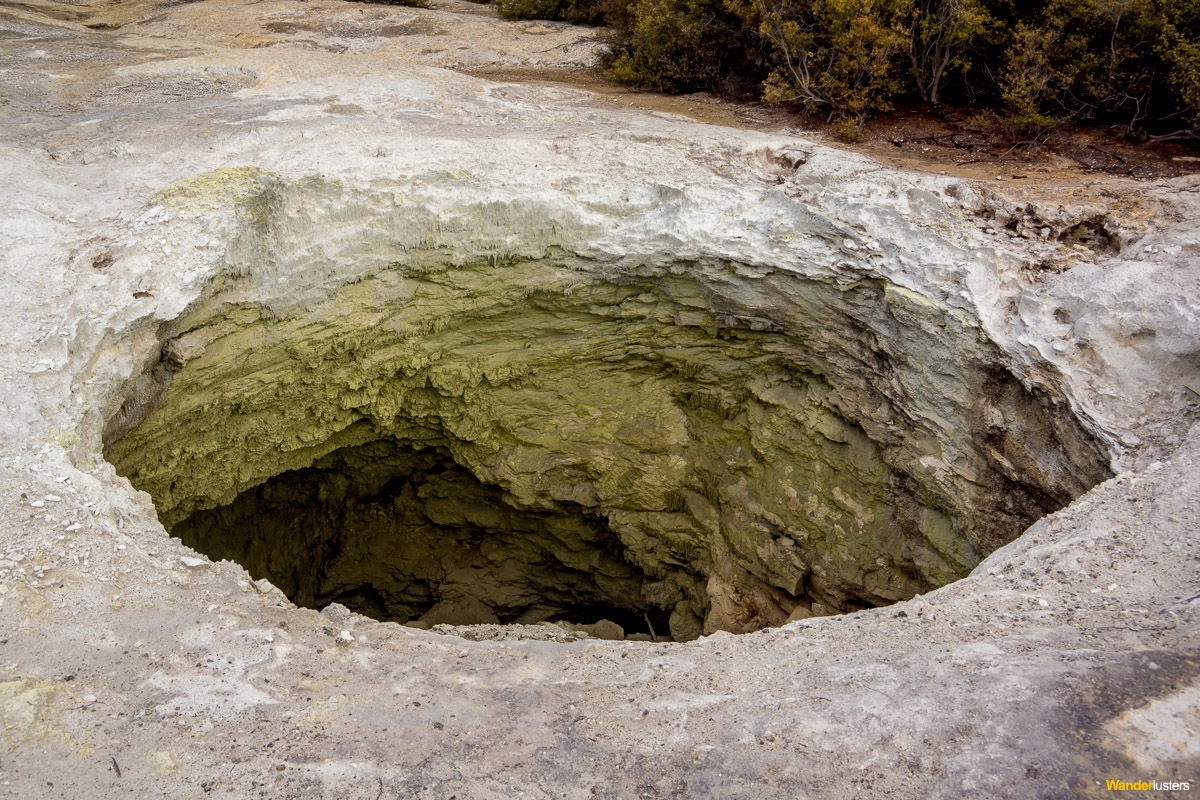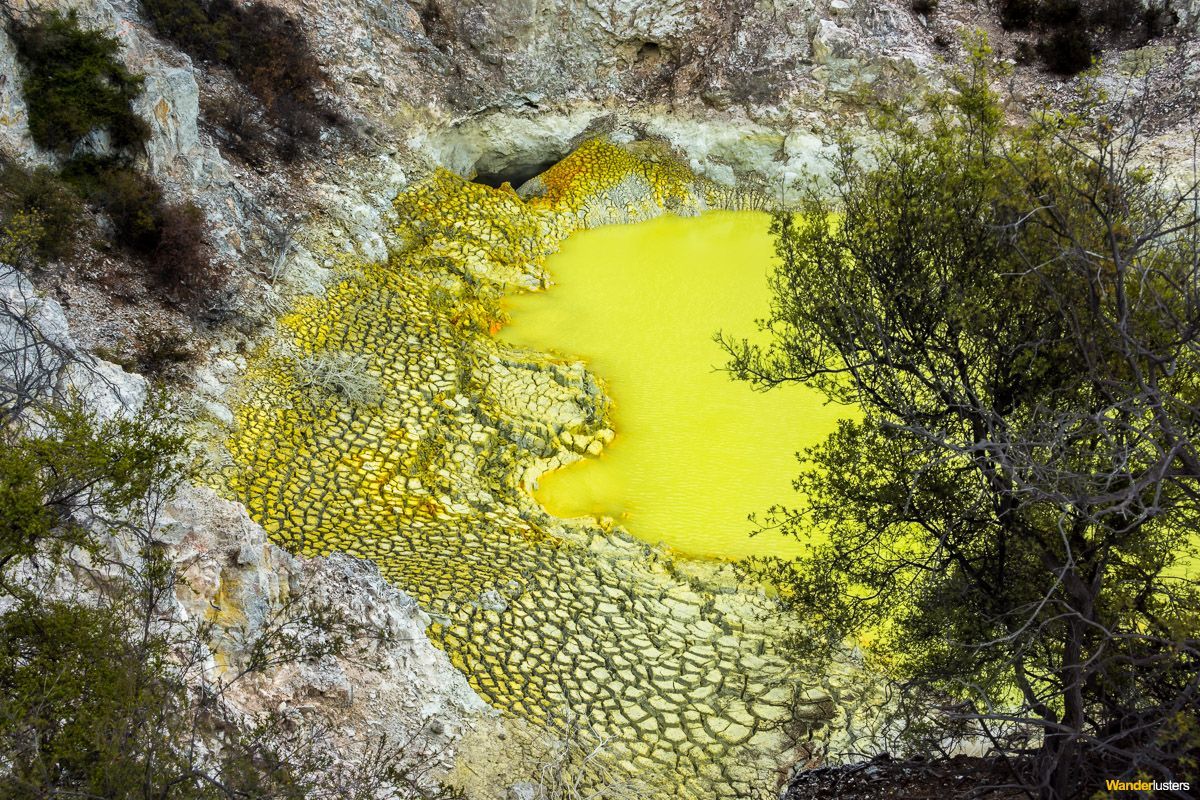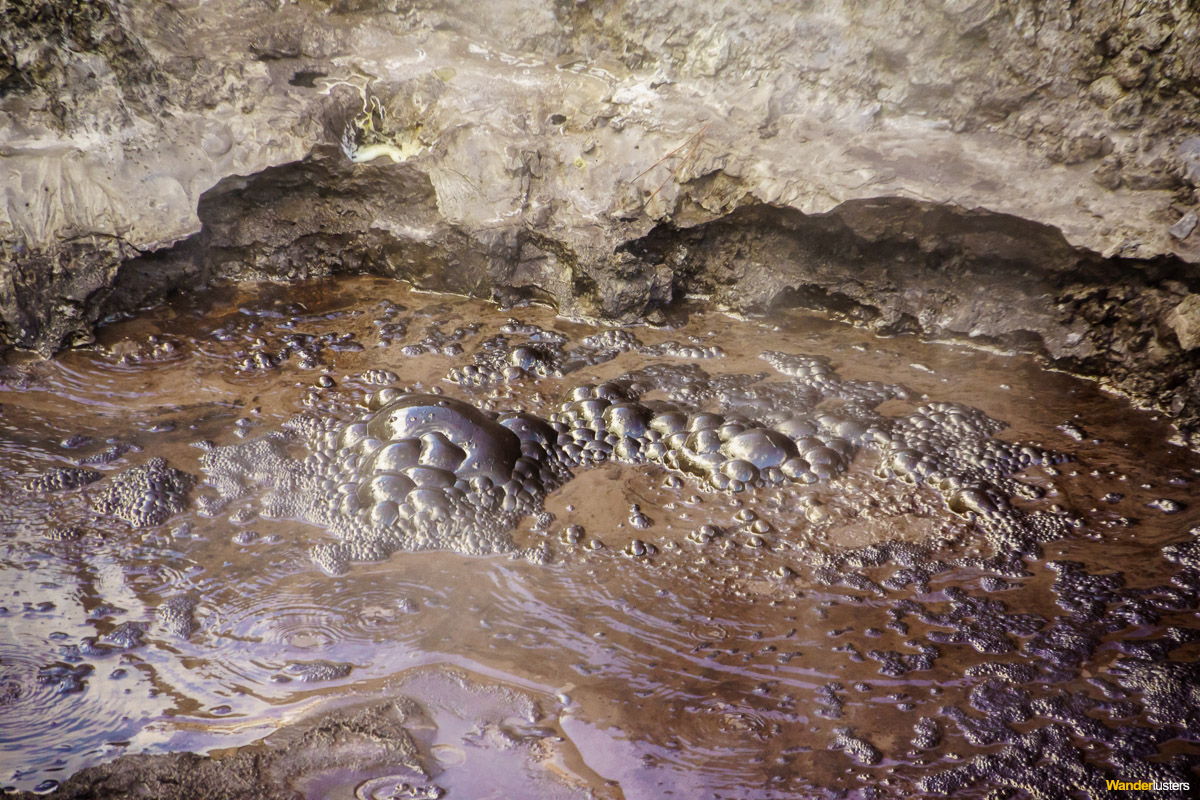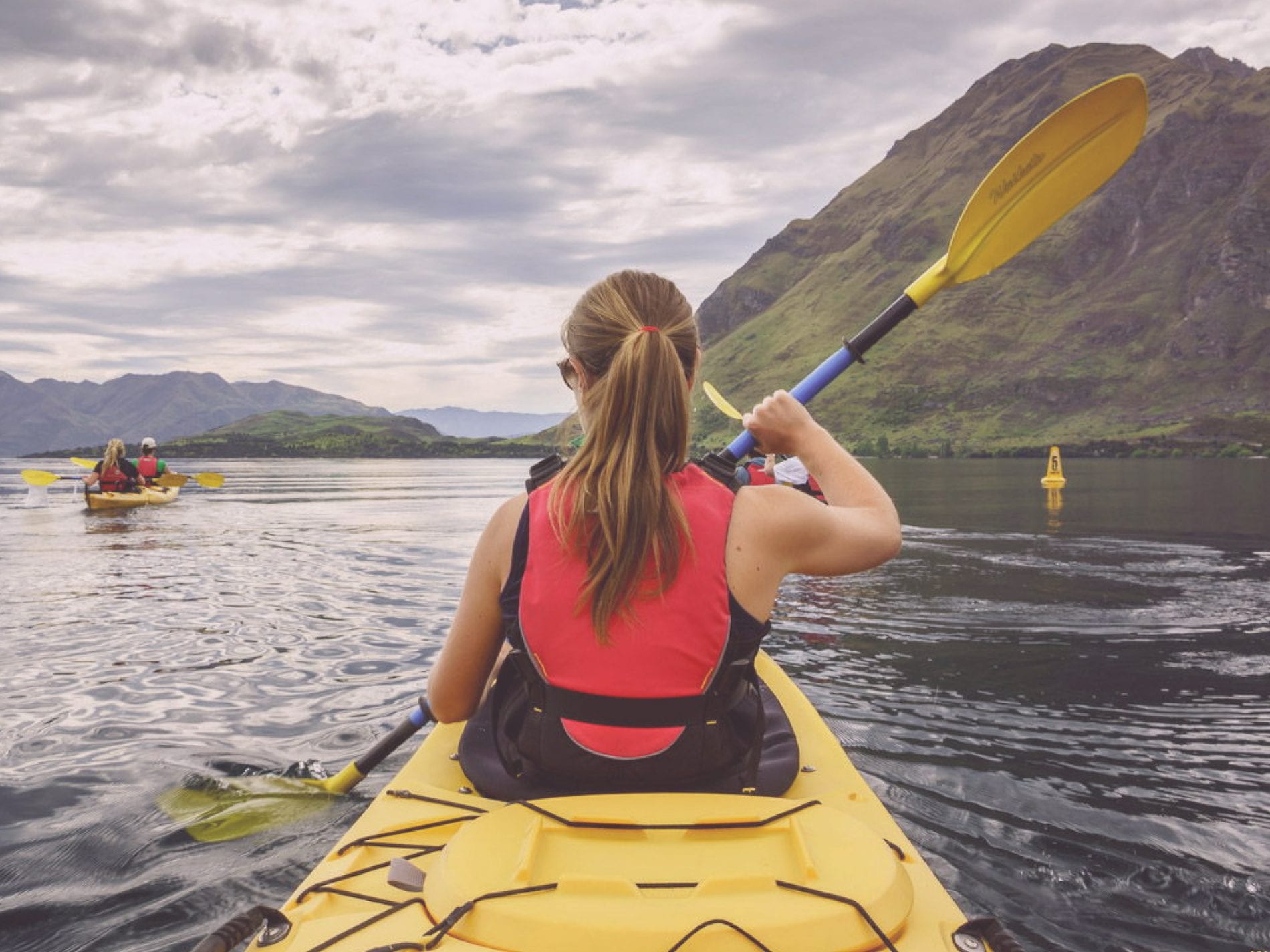Mother Nature’s phenomenal creativity is enchanting, and our adventures across New Zealand are frequently providing us with the opportunity to marvel at her exhibitions of natural design.
The country is well known for its earthquakes, volcanic activity and geothermal areas, and it is because of the presence of these natural building blocks that both the north and south islands have such diverse terrain.
We recently ventured inland from our house sitting assignment on the east coast, towards the world famous town of Rotorua.
To the untrained eye the streets look like that of any other country town, however upon arrival you can’t fail to note a whiff of something peculiar in the air. The primordial stench that lingers in your nostrils is the product of the turbulent geothermal activity taking place beneath your feet.
WHAT IS GEOTHERMAL ACTIVITY?
The word geothermal originates from ancient Greek and when translated literally means ‘earth heat’. On a basic level the theory is that heat from within the earth escapes to the surface cultivating a mineral rich volcanic environment.
Deep beneath the ground lies a system of streams which are constantly heated by the volcanic remnants of eruptions long ago.
As the water is heated it absorbs minerals from the surrounding volcanic rock and transports them to the surface as steam where they are eventually reabsorbed into the ground. It is this chemical reaction that produces the primordial stench or ‘hydrogen sulphide’ associated with geothermal activity.
WAI-O-TAPU SACRED WATERS
For those visiting Rotorua there are a number of different areas of geothermal activity to visit. From geysers and hot springs to boiling mud pools and hissing craters, the town has it all. After a little research it was the colourful pools of the Wai-O-Tapu Thermal Wonderland that caught our eye.
Forming part of an eighteen sq.km reserve administered by the department of conservation (although Wai-O-Tapu itself is owned by a Maori tribal business group) it has the largest surface area of thermal activity in the local Taupo volcanic zone.
Scattered with collapsed craters, boiling pools of mud and deep hydrothermal springs the reserve provides a wealth of colourful phenomenon to discover.
There are twenty five individual examples of geothermal activity in the reserve and we spent a little over two hours walking the three kilometre track that navigates around each one.
A relatively minimalist set up in comparison to some of the other more ‘touristy’ venues, the reserve has managed to stay true to the organic nature of the terrain and keep intrusion to a minimum.
Utilising the map provided we set off towards ‘Devils Home’, a collapsed crater where underground acid erosion has eaten away at the earth and caused it to collapse in on itself. The rough sides of the crater are tinged with a greenish hue from the cooling sulphuric volcanic vapours and ferrous salts escaping into the atmosphere.
The Devil’s Ink Pots depict the unstable nature of the volcanic environment. Boiling pots of black mud their water levels fluctuate with the varying amounts of rainfall.
Coloured an inky black by particles of crude oil and graphite brought to the surface with the escaping steam, they bear resemblance to a witch’s cauldron and smell like a sickly sulphur potion.
The crowning glory of the reserve has to be the Champagne Pool.
At sixty five metres in diameter and sixty two metres deep it is the largest natural spring in the area. Formed over seven hundred years ago by a hydrothermal eruption it continues to be fed from a system of underground streams.
Water entering the spring from below is up to two hundred and thirty degrees centigrade, as it rises it gradually cools to a tepid seventy four degrees where it then evaporates into the cool air above.
The high temperatures at depth encourage the transfer of minerals from the rock to the water. Gold, silver, mercury, sulphur, arsenic and thallium are all absorbed and brought to the surface where they are deposited at the edge of the spring on a sinter ledge.
This ledge is one of the recognizable phenomenon that make the reserve so distinctive, the minerals that collect on the ledge react to give it a bright orange hue. Contrasted against the sulphuric green water of the spring and the surrounding white siliceous terrace, the orange ledge and evaporating vapour give a glimpse into the first primitive environments on our earth.
Fed partly by run off from the Champagne Pool, the Devil’s Bath is a toxic mix of sulphur and ferrous salts that combine with the minerals from the champagne pool to create a day glow yellow anomaly.
The insipid colour changes through yellow to green depending on the amount of reflected light and cloud cover.
GEOTHERMAL COLOUR CHART
The varying palette of colours present in the reserve is due to the dominance of specific mineral elements escaping from deep within the earth.
- Green // colloidal sulphur / ferrous salts
- Orange // antimony
- Purple // manganese oxide
- White // silica
- Yellow //sulphur
- Red/Brown // iron oxide
GEOTHERMAL FLORA & FAUNA
Although there are no fish found in the waters of Wai-O-Tapu, due to the high level of minerals and toxic gases, there are a number of topside inhabitants that can be seen in the surrounding vegetation.
All the native flora and fauna, including the geological formations, are strictly protected and as such appear undisturbed by daily flow of foot traffic to the reserve.
The surrounding manuka scrub is extremely flammable, as are some of the mineral deposits, and fire is an ever present risk. During our visit we were informed that a bush fire destroyed some land just outside the reserve and had the flames reached the reserve itself, the whole area would have been engulfed.
Commonly referred to as Tea Tree the manuka is one of the few native plants that is not eaten by grazing animals, and provides a year round habitat for birds and mammals.
The most common sight amongst the geothermal activity is the Pied Stilt bird who feeds on insects found hovering over the flat areas of water. They appear undeterred by the less than fragrant air and acidic waters in which they wade, even choosing to take a nap stood in the toxic bath.
VISITING WAI-O-TAPU
Getting there: Travel south along the Thermal Explorer Highway (SH 5) towards Taupo for 27km until you reach the Waiotapu Tavern. Turn left opposite the tavern and follow the road down to Wai-O-Tapu.
- Entry Fees:
Adult: NZD $32.50
Child: NZD $11.00 (5 -15 years inclusive)
Family: NZD $80.00 (2 Adults and up to 3 Children)
Under 5 years are free of charge
Opening Hours: daily 8.30 am – 5.00 pm (last admission 3.45pm)
Christmas Day: – 8:30 am – 1:00 pm (last admission 11:45 am)
Visit: Wai-O-Tapu
We spent a little over three hours traversing the three kilometre route around the reserve and recommend dedicating at least two hours to take in the full range of geothermal activity.
Would you like to explore the environment that once aided in producing the first life on our earth? Share your comments below.

